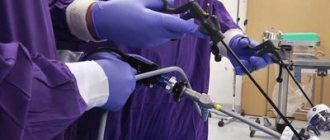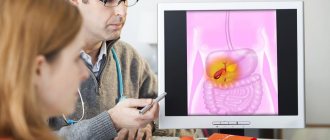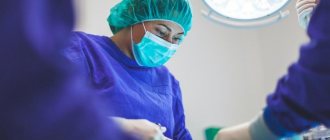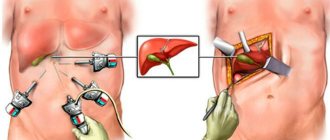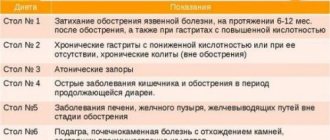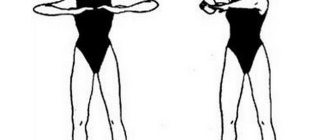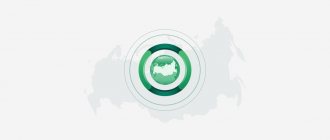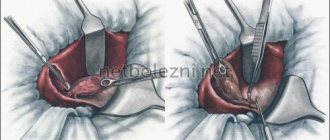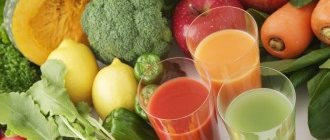The number of patients with cholelithiasis is steadily growing and ranges from 5 to 20% of the adult population [1]. Laparoscopic cholecystectomy is the “gold standard” for treating patients with cholecystolithiasis and is considered one of the most frequently performed operations in surgical hospitals [1, 2, 9].
Damage to the bile ducts is considered a serious complication of cholecystectomy. The incidence of bile duct injuries during cholecystectomy is 0.1–0.95% [1, 5, 7, 8, 12]. In the USA and Great Britain, up to 50% of surgeons report 1 to 2 cases of damage to the extrahepatic bile ducts during cholecystectomy during their professional career [6].
Despite the large number of publications, there is no generally accepted treatment tactics, and long-term results are not always satisfactory [1]. The active development of minimally invasive interventions and the high percentage of their successful use in the treatment of “fresh” injuries of the extrahepatic bile ducts make it possible in some cases to use them as an independent method of treatment [8, 10, 11, 13].
Functions
The gallbladder is an elongated sac that is located under the liver. It is necessary for the accumulation of bile and the regulation of its flow into the ducts. Its capacity reaches 50 ml. Increased bile formation is observed after eating fatty foods.
Given the direct connection with the liver, the inflammatory process from the bladder (cholecystitis) quickly spreads to the gland, causing hepatitis. The gallbladder has the following main functions:
- accumulative, due to which the bile becomes concentrated;
- excretory in response to the entry of food into the digestive tract.
In turn, bile:
- has antibacterial properties;
- helps in the breakdown of fats;
- neutralizes the acidity of the food bolus that comes from the stomach;
- stimulates peristalsis;
- increases the production of hormones (cholecystokinin, secretin) that activate digestive enzymes;
- removes toxins, bilirubin, and cholesterol.
Bile, produced in liver cells, enters the ducts and accumulates in the bladder, where it gets rid of water and becomes more concentrated. It contains acids, salts, pigments, cholesterol, protein structures and phospholipids. After food enters the digestive tract, the bile duct contracts, pushing the contents into the common bile duct (common duct) and duodenum.
What is cholecystectomy
The operation is carried out after a thorough examination of the patient. Its indications include stone formation, malignant lesions, empyema or gangrene of the gallbladder. Cholecystectomy can be performed openly or using laparoscopic instruments. The latter technique is characterized by fewer complications, a shorter rehabilitation period and a good aesthetic effect.
During the patient’s conversation with the anesthesiologist, the doctor talks about the features of anesthesia and, if necessary, prescribes additional examination (coagulogram, blood glucose).
If the patient is taking anticoagulants (drugs that inhibit the coagulation system), they must be discontinued 3-7 days before surgery.
12 hours before cholecystectomy, the patient is prohibited from eating and drinking.
Contraindications include:
- pregnancy;
- acute infectious diseases;
- severe blood diseases;
- decompensated cardiovascular, respiratory or renal failure.
Why does my liver hurt after gallbladder removal?
Today it is generally accepted that postcholecystectomy syndrome only includes dysfunction of the sphincter of Oddi, when its contractility is impaired, which impedes the flow of bile, as well as pancreatic secretions into the duodenum.
There are several groups of reasons why the liver hurts after removal of the gallbladder:
- diseases of the hepatobiliary tract;
- concomitant pathologies;
- reasons directly related to cholecystectomy.
Diseases of the hepatobiliary system
This group of causes includes infectious and inflammatory diseases of the liver, biliary tract and bladder. Among them it is worth noting:
re-formation of stones in the biliary tract;- chronic cholangitis;
- change in the properties of bile. A decrease in its concentration is accompanied by a disruption in the process of food digestion, which can manifest as discomfort and pain in the area of the right hypochondrium. On the other hand, the loss of the antimicrobial ability of bile is fraught with the activation of opportunistic flora and the development of inflammation in the ductal system and liver;
- biliary dyskinesia;
- exacerbation of alcoholic or drug-induced hepatitis.
Concomitant diseases
This group of causes includes pathological conditions not associated with damage to the hepatobiliary system. The appearance of liver pain can be a consequence of:
- stenosing papillitis, in which the duodenal papilla narrows against the background of an infectious and inflammatory process. Thus, the passage of bile and pancreatic juice in the duodenum is disrupted and hypertension (increased pressure) develops in the ductal system;
- complete obstruction of Vater's nipple;
- chronic pancreatitis;
- ulcerative lesions of the duodenal mucosa;
- reflux of contents from the duodenum into the stomach;
- persistent pericholedochal lymphadenitis, when inflammation of nearby lymph nodes persists for a long time in the postoperative period;
- duodenitis (inflammatory lesion of the duodenal mucosa);
- irritable bowel syndrome, when in the absence of structural disorders, functional failure of the organ is observed.
Consequences of surgery
If your liver hurts after gallbladder removal, it may be due to complications from the surgery. They are related to:
- partial removal of stones. A “forgotten” stone in the duct can cause pain in the area of the right hypochondrium;
- cicatricial narrowing of the common bile duct (common bile duct);
- adhesive process caused by fusion of injured tissues in the area of cholecystectomy;
- long stump syndrome. Sometimes the liver without the gallbladder hurts due to the lengthening of the remaining part of the duct due to hypertension. As a result, it becomes the site of new stone formation, which causes pain;
- damage to the bile ducts;
- improper placement of drains that do not provide a complete outflow of serous-hemorrhagic fluid;
- failure of sutures in the ducts;
- wound infection and abscess formation.
Do not forget that pain is a companion to all surgical interventions, as the body’s response to tissue trauma. However, you need to pay attention to its intensity and duration. Normally, the severity of pain gradually fades away, after which it completely ceases to bother the patient.
Predisposing factors in the postoperative period that increase the risk of pain in the right hypochondrium include:
- poor nutrition;
- great physical activity;
- inadequate pain relief;
- damage to surrounding organs during surgery.
How to maintain a healthy gastrointestinal tract after gallbladder removal
Gallstone disease as a disease has been known to mankind for thousands of years. However, due to the increasing number of patients with obesity and physical inactivity, its prevalence in the world is growing every year. At the same time, the number of operations to remove the gallbladder is increasing. For example, in America they are performed up to 1 million per year, in Russia the number of cholecystectomies exceeds 250,000. In Russia, patients after this operation are only under the supervision of a surgeon, so many of them often do not receive enough information on diet, lifestyle and prevention complications after surgery. This article contains effective tips for rehabilitation and prevention of the development of chronic diseases after removal of the gallbladder.
The main functions of the gallbladder and what happens if it is removed?
The gallbladder, despite its small size, is a very important organ - it collects and concentrates bile, releasing it when we eat to help digest fats. Accordingly, bile promotes the absorption of fat-soluble vitamins, has a bactericidal effect in the intestine and regulates its peristalsis.
After removal of the gallbladder, bile becomes less concentrated and continuously enters the intestines, where it has an irritating effect, disrupting the function of the entire intestine, causing diarrhea/constipation/dysbacteriosis.
It is important that removal of the gallbladder does not lead to a cure for gallstone disease, because the liver will continue to synthesize bile that is oversaturated with cholesterol, which can lead to recurrence of the disease and the formation of stones in the bile ducts.
How to plan physical activity after gallbladder removal?
After laparoscopic surgery, restrictions on physical activity are shorter than after abdominal surgery and they are in effect for the first month, then you can gradually return to the preoperative physical activity regime. It's better to start with walking, light exercise or swimming. Abdominal exercises that involve tension in the abdominal wall are contraindicated during the first 6 months. There are also restrictions on lifting weights in the first month - after laparoscopy no more than 4-5 kg.
Diet and lifestyle after cholecystectomy
There is a common belief, supported by many surgeons, that the diet after surgery only needs to be followed for a month, and then you can eat as usual and without restrictions. This opinion is erroneous, since the gastrointestinal tract needs at least 6-12 months to adapt to new conditions.
Following dietary recommendations will help reduce the load on the gastrointestinal tract, maximize the absorption of nutrients and prevent the accumulation of fats in the liver and the development of fatty liver disease. The diet is gradually expanded over time, excluding foods that can cause unpleasant symptoms and provoke postoperative complications.
The main principles of the postoperative diet are frequent meals in small portions, which will ensure better mixing with bile. It is strictly necessary to avoid fatty, fried, smoked, pickled, sour and spicy foods and avoid drinking alcohol in order to reduce the load on the liver, pancreas and gastrointestinal tract as a whole.
Basic nutritional recommendations
- eating small meals 5-6 times a day to prevent stone formation in the bile ducts;
- optimal temperature regime for food (about 60 degrees - neither cold nor hot);
- chewing food thoroughly;
- limiting animal fats and excluding “heavy” foods;
- adding foods containing fiber to the diet (whole grains, vegetables, fruits) to normalize intestinal motility and protect the intestinal mucosa from damage by bile;
- daily consumption of 200-300 g of protein from lean meat, poultry and fish;
- The volume of drinks and water consumed is at least 1.5 - 2 liters per day, excluding carbonated drinks.
Recommended Products
- yesterday's or dried wheat bread and baked goods;
- lean meat, poultry and fish;
- egg whites, yolk only in dishes (no more than one per day);
- butter and vegetable oil;
- vegetable soups and broths;
- low-fat fermented milk products, mild cheeses, heat-treated cottage cheese;
- fresh and cooked vegetables, with the exception of products that irritate the gastric mucosa (turnips, radishes, sorrel, spinach, garlic, fresh onions);
- non-acidic fruits and berries;
- meringues, marshmallows, marmalade, honey, jam;
- tea, coffee with milk, fruit drinks, jelly.
It is recommended to exclude foods with a high fat content from the diet (baked goods, cakes and pastries, lard, ham, sausages); fried, smoked, spicy dishes; spices and alcohol.
Why is it important to undergo examination after surgery?
One month and six months after cholecystectomy, gastroenterologists recommend undergoing a mandatory examination, which will help identify in the early stages a progressive obstruction of the bile ducts, assess the risks of non-alcoholic fatty liver disease and chronic pancreatitis.
The examination includes a consultation with a gastroenterologist, ultrasound of the abdominal cavity and liver elastography, biochemical blood tests, and stool analysis.
In the first year after surgery, you should be extremely attentive to your body, follow a diet and visit your gastroenterologist 1, 3 and 6 months after surgery. Then, if you feel well and have no disturbing symptoms, visit your gastroenterologist once a year.
“Rehabilitation after removal of the gallbladder” has been developed and is being carried out for patients after cholecystectomy , which includes the necessary examinations and preventive treatment by a gastroenterologist specializing in the treatment of patients with cholelithiasis.
Symptoms
Before surgery, the first thing you need to do is find out what hurts: the liver or the gallbladder. Treatment tactics and prognosis for life depend on this. Diagnostic measures include laboratory and instrumental studies that make it possible to confirm the pathology of the bladder and make a decision on surgical intervention.
The clinical symptoms of postcholecystectomy syndrome are quite varied.
Pain after gallbladder removal is observed in 70% of cases.
Let's look in more detail at the nature of the pain:
- the attack lasts about a quarter of an hour, and nausea and even one-time vomiting may occur;
- the intensity of the pain increases at night and after eating;
- pancreatic pain is located in the left hypochondrium, radiates to the back, and decreases in intensity when bending forward;
- biliary pain is localized in the hepatic region and spreads to the area of the right scapula.
In addition, the patient is concerned about:
- frequent diarrhea, which is caused by changes in the concentration and composition of bile, which leads to impaired digestion of food (malabsorption syndrome);
- bloating;
- rumbling;
- nausea;
- belching;
- weight loss;
- foul-smelling stool;
- cracks in the corners of the mouth;
- hypovitaminosis;
- malaise;
- drowsiness.
Hyperthermia and mild signs of jaundice may also be recorded.
Therapeutic diet after cholecystectomy
After cholecystectomy, a person will have to follow a diet throughout his life. After all, after removing the gallbladder, there will be no reservoir where all the bile can accumulate. Therefore, it is necessary to create a certain unloading of the biliary tract. In this case, only special nutrition can help, the essence of which is frequent meals.
Diet after laparoscopic cholecystectomy
Are there any specific nutritional recommendations or diet after laparoscopic cholecystectomy? The first thing you should do is try to eat as often as possible. After removal of the gallbladder, you need to eat in a special way. Fried foods should be avoided. Now everything should be cooked just by steaming. Under no circumstances should you include lard or animal fats in your diet. The first course should be vegetable soups, without any broth. No meat infusions, this is prohibited. If we talk about main courses, then in this case meat is suitable, but only not fatty. It is recommended to give preference to beef and poultry meat. Pork and veal should not be in the human diet! Detailed recommendations should be made by the attending physician. The main thing is that the diet after removal of the gallbladder is always followed. Naturally, this is not so simple, but after a while a person begins to get used to such a diet.
Diet 5 after gallbladder removal
What should be a gentle diet 5 after removal of the gallbladder? Of course, it is difficult to eat only according to certain rules all your life. But who said that you can’t eat anything tasty? There are a huge number of interesting and healthy dishes. Naturally, at first you should limit yourself to only light soups and cereals. But in the future it is quite possible to diversify the diet. Lean meat is gradually added, with which you can prepare many interesting dishes. You are also allowed to eat omelettes and prepare a variety of salads. You just have to replace the mayonnaise with some other dressing. You should forget about chips and other harmful things. But this is not the worst thing. Usually, after gallbladder removal, people are scared by the word diet itself. But in reality there is nothing wrong with this, the restrictions are not so serious. The diet after removal of the gallbladder is nothing supernatural. Simple healthy eating, with no place for junk food.
Diet recipes after gallbladder removal
What interesting diet recipes can you use after gallbladder removal? In fact, there are quite a few of them. Therefore, one of them will be given below so that a person understands that even while on a diet, you can eat tasty and healthy food. So, the first recipe is a tongue with stuffed cheese. To prepare this dish you will need to take the main ingredients, such as 200 grams of tongue, the same amount of hard cheese and just a little mayonnaise. Yes, you can use the last component, but only in limited quantities. The tongue should be boiled in salted water, then cooled and finely chopped. After which grated cheese is added and everything is mixed with mayonnaise, a tasty and healthy salad is obtained in literally a matter of minutes. You can prepare the same meat salad, but only with lean meat and a very weak addition of mayonnaise. Diet after gallbladder removal is not a death sentence at all. You can always cook something tasty.
Diet menu after gallbladder removal
What should be the correct diet menu after gallbladder removal? The main thing is to exclude foods that are somewhat irritating to the body. After all, he is simply not able to “hide” bile in a certain reservoir. Therefore, at first you should give preference to light food. It is advisable that these be vegetable soups, and for main courses lean meat and porridge. Over time, you can cook something more interesting. So, there are quite a lot of healthy and tasty recipes. Who said you have to give up your usual diet? Nothing of the kind, it will just need to be modified a little. All the usual salads can be eaten, but slightly replacing some of the ingredients. Naturally, it is advisable to consult with your doctor. In fact, the diet after removal of the gallbladder is nothing terrible.
Diet by day after gallbladder removal
There is a certain diet for the days after removal of the gallbladder, but it can only be used after the approval of a doctor. So, its essence is that in the first days after the operation you should eat only light food. Vegetable soups are perfect, but making rich broth is not recommended. As a second course, you should give preference to porridge, with a light addition of meat, but not fatty.
It is worth giving up unhealthy foods such as chips, carbonated drinks and even sweets. Over time, the diet can be diversified. But this is done only after consultation with a doctor. So, in the future you will be able to eat your usual foods, but some components will most likely have to be replaced. After a while, it is possible to use mayonnaise, but only in small quantities.
On the first day after surgery, you are allowed to drink water or rosehip decoction in small sips. You should refuse food for now, your body is too weakened.
On the second day , it is quite possible to use unsweetened jelly; low-fat kefir is also suitable. In general, the amount of liquid should not be less than 1.5 liters.
On the third to fifth days, the diet expands somewhat. It is quite possible to consume natural juices, mashed potatoes and even tea with sugar. But you shouldn’t abuse it, everything is in small “doses”. Starting from the fifth day, you can allow yourself to eat some crackers.
On the sixth and seventh days, porridge, unsweetened cottage cheese and even finely chopped meat are perfect. But it is not advisable to eat fish yet.
It should be understood that the amount of liquid consumed should not be less than 2 liters. Starting from the 8th day, you can resort to a more gentle diet. You are allowed to eat meat, fish, eggs, milk porridge, as well as various vegetable purees. But, in general, the diet after removal of the gallbladder is agreed only with the attending physician. ation can be diversified. But this is done only after consultation with a doctor. So, in the future you will be able to eat your usual foods, but some components will most likely have to be replaced. After a while, it is possible to use mayonnaise, but only in small quantities.
Treatment
Before starting to treat postcholecystectomy syndrome, it is necessary to establish the cause of its development. Digestive disorders respond well to drug correction, so the gastroenterologist may limit himself to prescribing drugs to normalize bile flow. check out the ratings of online casinos
If the cause of pain is surgical error and other complications of cholecystectomy, repeat surgery is necessary.
Regardless of treatment tactics, the patient must adhere to dietary nutrition throughout his life.
Medication assistance
To alleviate the patient’s general condition and relieve pain, the doctor may prescribe the following groups of drugs:
nitrates. A prominent representative is nitroglycerin. It is used to regulate the function of the sphincter of Oddi. While taking it, you should monitor your blood pressure;- antispasmodics. They are necessary to expand the bile ducts, normalize bile flow and prevent its stagnation;
- analgesics are prescribed to reduce the severity of pain. When using non-steroidal anti-inflammatory drugs, in addition to the analgesic effect, the activity of inflammation in the ducts decreases;
- enzyme preparations. The medicine is used to normalize the process of food digestion;
- antacids are necessary to reduce the acidity of gastric juice;
- Antibacterial agents are prescribed for prophylactic and therapeutic purposes to inhibit the activity of pathogenic microorganisms.
Surgery
Complications of the operation may be associated with insufficient examination of the patient before cholecystectomy, low qualifications of the doctor, or incorrect choice of surgical method.
There are certain indications and contraindications for the laparoscopic and open method of bladder removal, without which the risk of developing severe complications in the postoperative period increases.
In addition, there are causes of pain that are not related to these factors. This concerns the adhesive process, the activity of which cannot be controlled. Even if you follow all medical recommendations to prevent the formation of adhesions, there is still a risk of narrowing of the ducts due to improper fusion of damaged tissues.
To eliminate the surgical cause of the pain, a repeat operation is required to remove the remaining stones, dissect adhesions and scars in order to restore bile outflow.
If pain is caused by Oddi dysfunction, sphincteroplasty is performed using endoscopic instruments.
Material and methods
From 2010 to 2016, 5038 cholecystectomies were performed at the Interterritorial Center for Liver and Pancreas Surgery of the Belgorod Regional Clinical Hospital of St. Joasaph, of which 806 (16%) were for acute calculous cholecystitis. The results of treatment of 37 patients with bile leakage after cholecystectomy, identified intraoperatively and in the postoperative period (bile leakage through safety drainage, biliary peritonitis, bilomas), were analyzed. In 31 cases, laparoscopic and in 6 cases, open cholecystectomy was performed. In chronic calculous cholecystitis, damage to the extrahepatic bile ducts was diagnosed in 16 (0.38%) patients, in acute calculous cholecystitis - in 14 (1.74%). 7 patients were operated on in other medical institutions. In 29 (76.3%) cases, the following features were identified: Mirizi syndrome - 2 (6.9%), wrinkled gallbladder in a dense infiltrate - 15 (51.7%), anatomical variants of the bile ducts (accessory ducts SV, SVIII) - 1 (3.4%), choledocholithiasis - 11 (37.9%). In the analyzed group there were 26 (70.3%) women and 11 (29.7%) men. The average age of the patients was 53.8 years (men - 57.4 years, women - 52.2 years).
Damage to the extrahepatic bile ducts was diagnosed based on the detection of bile leakage intraoperatively (2, or 5.4%), in the early (28, or 75.7%) and late (7, or 18.9%) postoperative period. Bile leakage through safety drains was observed in 9 (24.9%) patients, into the subhepatic space with the development of biloma - in 9 (24.9%), into the free abdominal cavity with the development of peritonitis - in 19 (51.4%) patients.
Depending on the location and nature of damage to the extrahepatic bile ducts and surgical tactics, patients are divided into four groups: failure of the cystic duct stump, damage to the Luschka ducts, marginal damage to the bile ducts, complete transection of the bile duct. In 21 (56.8%) patients, incompetence of the cystic duct was detected, in 7 (18.9%) - marginal damage, in 1 (2.7%) - complete intersection, in 8 (21.6%) patients there was damage to the ducts Lushki.
